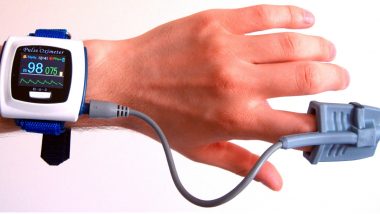A sudden interest has been shown in the fingerprint pulse oximeter during the COVID-19 pandemic. It is a medical device that lets you check your oxygen saturation levels. You must attach it to your finger or toe to detect your birth oxygen levels. But what does the pulse oximeter have to do with the COVID-19 symptoms? Low blood oxygen levels have been a typical pattern in many COVID-19 patients. This is perhaps making people get their hands on pulse oximeters to measure the saturation in red blood cells.
How Does the Pulse Oximeter Work?
When you put your finger in the device, it will show the percentage of oxygen that your blood is carrying. You need a SpO2 of at least 89% to keep your cells healthy. However, you would know there was a problem if your blood oxygen levels dipped to dangerously low levels. You would not need a pulse oximeter to tell you so. When your oxygen levels are low, you will feel extremely short of breath. New Symptoms of COVID-19 Listed By CDC: Chills, Repeated Shaking, Loss of Taste And 3 Other Signs of Coronavirus Infection You Must Watch Out For.
Do You Need to Buy a Pulse Oximeter during COVID-19 Pandemic?
Doctors usually prescribe pulse oximeters for patients with chronic lung disease, such as pulmonary hypertension emphysema who receive supplemental oxygen at home. If you suffer from one of these conditions, you need to monitor your oxygen levels regularly, so you know when to increase the flow rate of their supplemental oxygen. But if you are an otherwise healthy person, you may not need a pulse oximeter. Is Red Rash a Symptom of Coronavirus? Dermatologists Fear Changes in Skin Condition Could Indicate COVID-19.
Blood oxygen levels are just one of the many vital signs of COVID-19, so the role of a pulse oximeter during the Covid-19 pandemic is 'limited' for most people. If you are asymptomatic, the SpO2 readings are going to be useless. Besides, it is not unusual for oxygen saturation to stay close to normal and then drop suddenly. As a result, normal oxygen saturation can be falsely reassuring. ‘COVID Toes’, a Possible Symptom of Coronavirus Infection: Know More About The Mysterious Skin Condition That May Be Related to COVID-19, Dermatologists Say.
It is also possible that you could see inaccurate readings when you use a pulse oximeter at home. Nail polish, cold hands and poor circulation are all things that can interfere with the mechanism of the devices and result in false numbers. However, if you are already tested positive for COVID-19 and are recovering, a pulse oximeter will help you monitor if you need more supportive care.
(The above story first appeared on LatestLY on Apr 28, 2020 12:06 PM IST. For more news and updates on politics, world, sports, entertainment and lifestyle, log on to our website latestly.com).













 Quickly
Quickly


